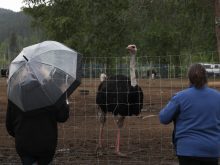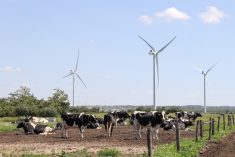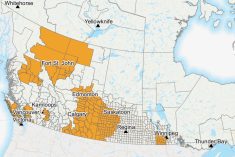Copenhagen | Reuters — Denmark, the top exporter of mink furs, will compensate its mink farmers with up to 19 billion Danish crowns (C$3.95 billion) following an order last year to cull the country’s entire population.
Denmark’s entire herd of some 17 million mink, one of the world’s biggest and highly valued for the quality of its fur, was ordered to be culled in early November after hundreds of farms suffered outbreaks of the COVID-19 coronavirus and authorities found mutated strains of the virus among people.
Lawmakers on Monday agreed a deal that includes compensation to the farmers for idle machinery and lost revenue until 2030, the country’s finance ministry said in a statement.
Read Also

Europe, North America face early wave of bird flu cases
An unusually early outbreak of bird flu cases affecting high numbers of wild birds and poultry farms across Europe and North America is raising concerns of a repeat of previous crises that led to mass culling and food price spikes.
Denmark was the top exporter of mink to luxury fashion labels, with its pelts in high demand due to high breeding standards.
The move to cull Denmark’s entire mink population left the government reeling, and prompted its agriculture minister to step down after it admitted it did not have the legal basis to order the culling of healthy mink.
Monday’s deal also allows farmers to begin breeding mink when a temporary ban ends next year.
In Canada, two mink farms in British Columbia’s Fraser Valley were placed under quarantine last month after animals at both properties, and workers at one of the properties, were confirmed to have COVID-19, believed to be the first such cases in Canadian farmed mink.
Testing at the site of the first outbreak showed the infected people and animals had an “identical or nearly identical strain” which has already been circulating in people in the province, “indicating COVID-19 spread from people to animals and not the other way around.”
As for the second farm, the provincial ag ministry said Dec. 24 that it’s “not currently known how the mink contracted the virus and the ministry is currently working with stakeholders to identify potential sources.”
Canada’s mink farms — fewer than 100 across the country, mainly in Ontario and Nova Scotia — reportedly began tightening their biosecurity in 2020 after COVID-19 cases began to appear in farmed mink, first in the Netherlands in April, then in Italy, Spain, Sweden and the U.S. as well as Denmark.
— Reporting for Reuters by Jacob Gronholt-Pedersen. Includes files from Glacier FarmMedia Network staff.















